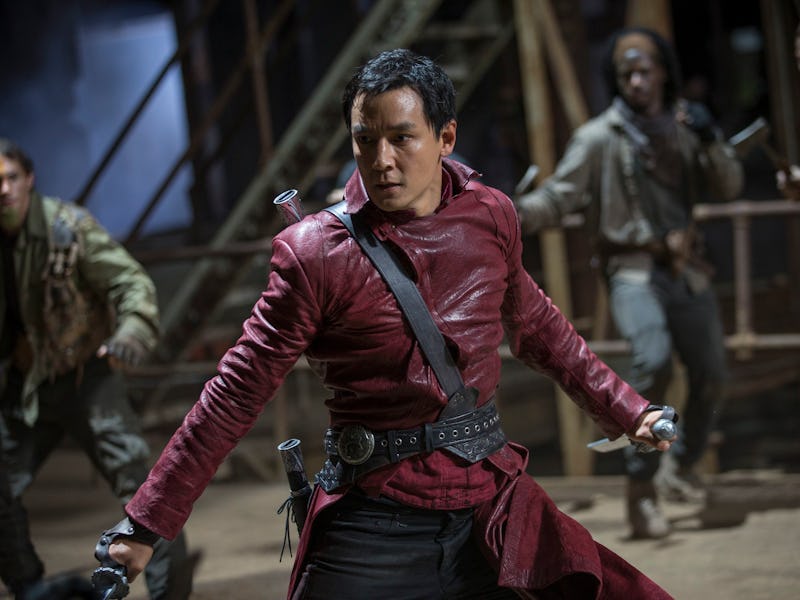The Best Post-Apocalypse Show You Haven’t Seen Is More Than the Sum of Its Parts
Part-wuxia, part-western, the AMC series is an ambitious homage to so many beloved genres.

There always seems to be a demand for martial arts epics. Though the industry itself has trouble keeping up with — or even outright acknowledging — that demand, Netflix has become a surprising destination for those looking to expand their horizons. The streamer hosts a handful of truly great martial arts stories on its platform, from Max’s Warrior to animated series like Blue Eyed Samurai.
This week Netflix also expands its catalogue to include some hidden gems from AMC. Interview with the Vampire has been quietly dominating on the streamer since its debut, but it’s not the only AMC original that deserves a bit of love. The studio also has plenty of action-forward series to choose from, and one in particular — Into the Badlands — may be just the series to binge after exploring other, more straightforward stories.
Into the Badlands is a hodge-podge in the best possible sense. Not unlike something like HBO’s Westworld or even CW’s The 100, the series takes a simple tale of dystopia and splices it with high-concept genre themes. It’s a wuxia, a western, and a heady sci-fi all rolled into one, taking place in a distant future but remixing a number of classic genres.
After centuries of fighting, society has regressed into its cutthroat feudal roots. What’s left of the United States has been carved up into seven regions, each ruled by a handful of kingpins called barons. Without any technology to speak of, warriors are trained in hand-to-hand and martial combat. The best become personal guards (or “clippers”) for barons in their region, and our protagonist, Sunny (Daniel Wu), may be the best clipper there is. He’s skilled with a sword but just as deadly without; he also pulls double-duty as an advisor to his baron, Quinn (Marton Csokas).
What seems like a cushy life is soon upended when Sunny rescues a teenaged boy, M.K. (Aramis Knight), from the clutches of a rival syndicate. M.K. is the series’ ostensible protagonist: he narrates most episodes via voice over, but he also wields a set of mysterious powers that threaten to push Badlands into true YA territory. While he’s on the run from a formidable baron called the Widow (Emily Beecham), he’s also striving to return to his hometown, which conveniently resides just outside of the Badlands. Sunny — a much more interesting protagonist for his surly lone wolf attitude alone — may know exactly where that town is, so he doesn’t hesitate to join M.K. on his quest to find it.
Badlands takes its grounded genre influences and pushes them to their conceptual limit.
With Sunny’s guidance, M.K. will grow into a formidable warrior in his own right. His journey is certainly interesting — especially in how it informs Sunny’s arc — but the true star of Badlands might just be the world of the series itself. It feels like an alternate take on the past, thanks to its period-esque costumes and its Antebellum set design. Baron Quinn’s fortress is essentially a plantation house: As his chief export is (for some reason) opium, our characters spend a lot of time strolling and/or sneaking through fields of poppy flowers. It’s just one of many arresting visuals in the series, each designed to spark some sense of recognition.
Badlands is a melting pot of homages, from Wong Kar-wai’s Grandmaster to the works of John Ford. The series also gets a major boon with its cast, which later expands to include heavy-hitters like Stephen Lang, Lorraine Toussaint, and Nick Frost. Again, this is a fairly heightened series, so expect plenty of scenery chewing. But if you’re on the hunt for an earnest exercise in worldbuilding — one that comes from the minds of Alfred Gough and Miles Millar, the creators of Smallville — then Badlands could be a great follow-up to the grounded thrills of Warrior.